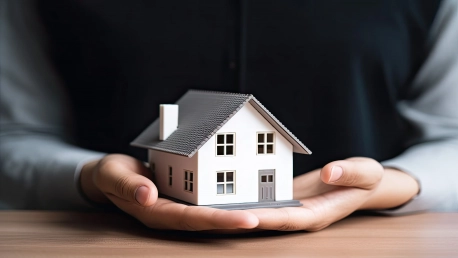The reality is both stark and unsettling: as the earth’s climate continues to change, homeowners are feeling the heat in an unexpected way—through skyrocketing home insurance rates. The United States is finding itself confronted with a surge of weather-related catastrophes, each leaving its own dent in the lives of homeowners and the coffers of insurance companies alike. It’s a growing economic concern born from the environmental turmoil of our times. This article delves into the complex relationship between the increasing threat posed by natural disasters and the financial challenges homeowners now face as they navigate the waters of home insurance.As if mirroring the volatile weather patterns themselves, home insurance premiums are undergoing tumultuous shifts. Insurers, having borne the brunt of numerous recent natural disasters, are now rethinking their strategies and recalculating risks—decisions that have a direct, often burdensome, impact on homeowners. The trend points to a pressing issue at the nexus of environmental and economic dynamics: the escalating cost of insuring a home at a time of climatic uncertainty.
The Financial Strain on Homeowners and Insurers
There was a time when insurance companies could predict potential losses and set premiums accordingly, but the uncharted territory of climate change has upended that predictability. Payouts after natural disasters are dwarfing premiums, thrusting the insurance industry into an unfamiliar realm of financial instability. This unprecedented shortfall has led to insurers making a tough call: increase the premiums. This move, while stabilizing the insurers’ balance sheets, leaves homeowners grappling with enhanced financial pressure. For some, these mounting expenses are manageable, yet for others, they pose a stark choice—fork out for expensive insurance rates or potentially lose their homes to the uncaring forces of nature.Caught between the proverbial rock and a hard place, homeowners are confronting a strained economy and an unforgiving environment. The rise in insurance rates is not a standalone issue but rather a piece of a larger financial puzzle that families must solve as they plan for their future amidst ongoing economic turbulence. These decisions are not taken lightly and can mark a monumental shift in a family’s prospects and peace of mind.
Adaptation of Insurers to Climate-Related Risks
With higher rates comes the inevitable consequence of adaptation, as insurance companies reinvent their strategies to combat climate-related risks. Data-driven risk models are being retooled to accommodate the escalating occurrence of natural disasters in the hopes of better predicting, and thus pricing, potential future claims. Yet, this adaptation is not without its own set of consequences for consumers. It often leads to less available coverage for those in high-risk areas, and even the complete withdrawal of insurance services from some regions—casting a widening net of insecurity over areas hardest hit by climatic upheaval.The insurers’ move to more accurately align premiums with risk levels can be seen as an essential adjustment to an unpredictable world. This recalibration does, however, pose significant challenges to homeowners, especially when their homes have suddenly been classified as high risk. The complexity and sophistication of contemporary risk models may lend insurers a helpful hand, but for many homeowners, this evolution signifies swelling costs and shrinking coverage.
Regulatory Responses to Insurance Market Volatility
Amidst this scene of burgeoning premiums and altered coverage, state governments have moved to intervene—each with their distinctive approach tailored to their constituents’ needs. Some states are trying to sweeten the sour pill of high premiums by offering discounts for home improvements that mitigate risk, such as fire-resistant materials or storm surge barriers. This carrot-and-stick policy incentivizes homeowners to protect their properties and potentially curb the cost of their insurance.In other states, efforts are more focused on maintaining a healthy insurance market by easing the path for insurers to adjust their premiums. While these initiatives aim to foster a more adaptable and responsive insurance landscape, they do so with an eye toward staving off political fallout from disenchanted voters who are already stretched thin by increased living costs. Balancing the scales between the needs of the market and consumer protections remains an ongoing act of legislative dexterity.
Personal Stories from the Frontlines of Insurance Rate Increases
Behind the statistics and the regulatory actions lie the real stories of struggle. Personal tales of homeowners battling with doubled insurance premiums or facing denied coverage claims paint a harsh reality. Each narrative underscores the individual impact of this broader trend—where the fates of families are being rewritten amidst the backdrop of a changing climate.These accounts lend a human face to the insurance rate crisis, illustrating not just the financial struggle but also the emotional toll it takes on homeowners. Complex insurance landscapes and challenging weather phenomena culminate in pressing questions: Will I be able to afford my home? Will my family be safe? What does the future hold? Such is the reality for many, standing as a testament to the pervasive anxiety that accompanies each increase in their insurance bills.
Insurance Market Conundrum: Risk vs. Necessity
The stark truth is that millions of properties in the U.S. now sit within the high-risk threshold for natural disasters, making them vulnerable to both higher insurance rates and the potential for reduced coverage. This precarious position is alarming for homeowners who must maintain insurance—often a requirement for mortgages. The seemingly unsolvable problem of needing to afford rising premiums to avoid defaulting on a mortgage encapsulates a significant challenge for the average homeowner.Despite the dilemmatic nature of the situation, insurance remains a fundamental element of homeownership, serving as a buffer against the unpredictable and often destructive whims of nature. The delicate balance that must be achieved between managing risk and ensuring accessibility to insurance is a puzzle that continues to challenge all parties involved. In an era marked by climatic uncertainties, owning a home is now inextricably linked with navigating an evolving and increasingly complex insurance landscape—one that demands resilience and adaptability from all its stakeholders. As climate dynamics keep transforming, the economic implications for homeowners demonstrate the deep-seated need for sustainable solutions in an insurance market grappling with unprecedented volatility.









